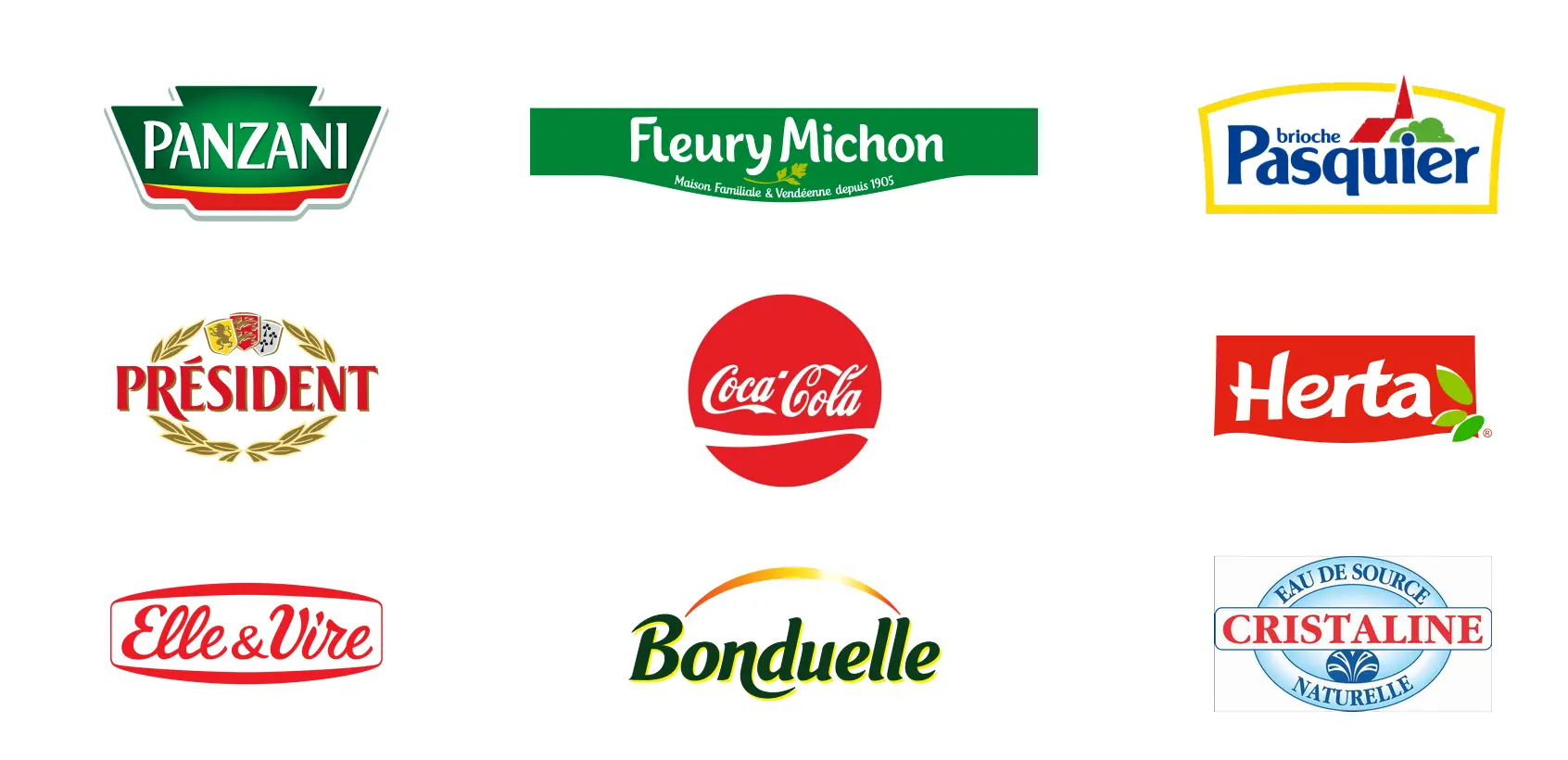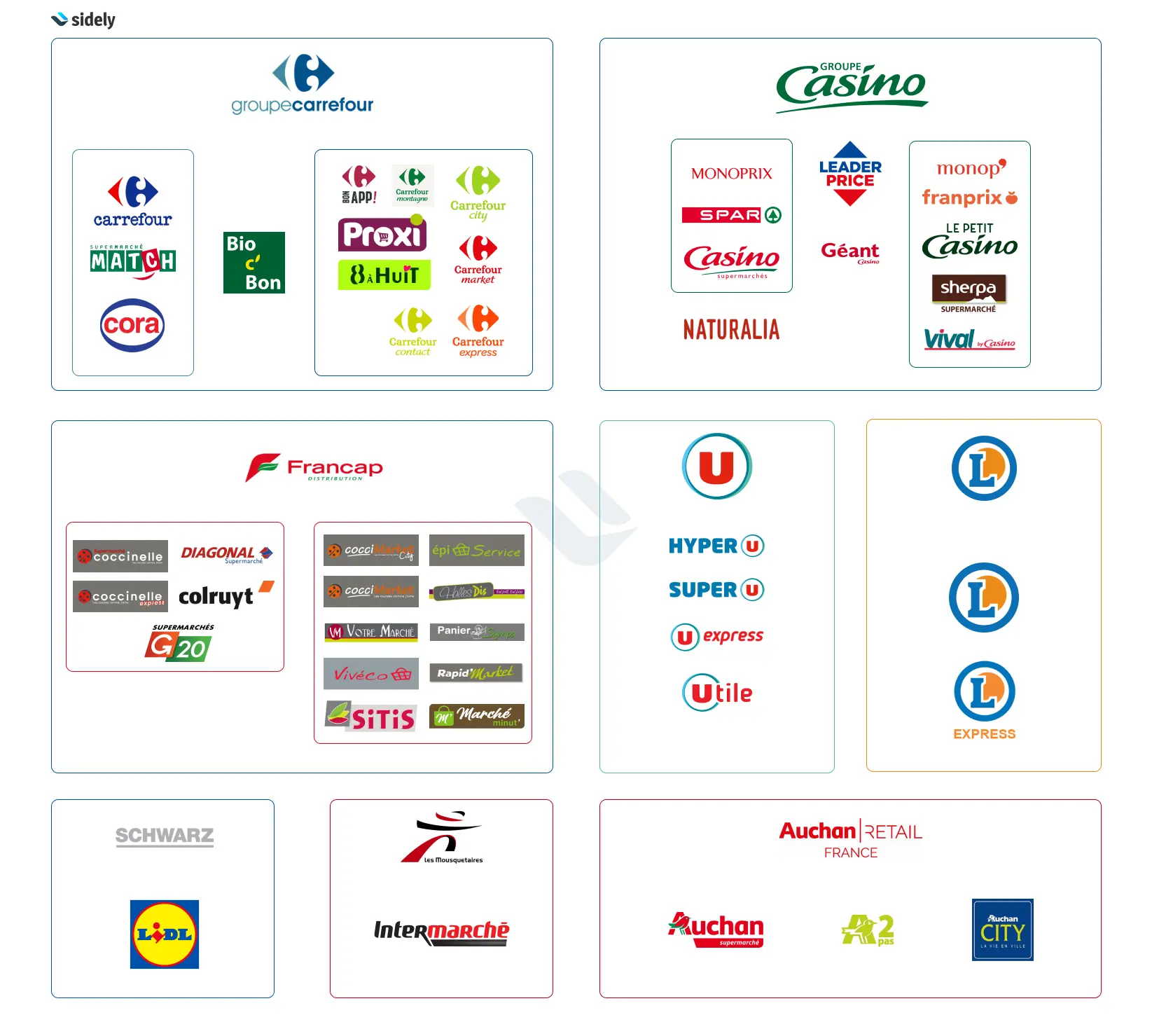

Large and medium-sized retailers, more commonly known as GMS, represent a strategic choice for many companies wishing to expand their market presence. And with good reason: 70% of food products are sold in GMS, accounting for 85% of sales in the food retail sector. There are over 20,000 outlets throughout France.
Being listed in supermarkets gives you access to a massive potential audience. What's more, increased visibility on shelves, privileged in-store positioning and promotional campaigns all contribute to boosting your brand's reputation.
But beware: selling in supermarkets is not all roses. Certain power relations can complicate your negotiations and make point-of-sale activation more difficult than it seems.
Who are the players in the supermarket sector? How are relationships structured between chains and brands? How are roles shared? Find out in this article.
We'd like to start by reviewing the basics. Distribution is the intermediary between the consumer and the brands (who may also be the producer). It is the link between the two ends of the chain, making it indispensable. Very few markets can manage without distribution.
Why? Because central purchasing agencies and buyers provide brands with access to a market and a target through a physical or digital network, and its marketing strategy. They help to reduce the cost of making products available, by managing invoicing, logistics, storage and so on.
For their part, retailers need to offer consumers the right products, at the right prices, in the right quantities and at the right time, so that they buy.
As you can see, there's no avoiding distribution. That's why you have to choose wisely. Selecting a distributor means aiming at a target clientele. And that can have repercussions.
Brands are producers who sell under a distinctive sign or a sum of distinctive signs (name, logo, color, smell, etc.) to consumers.
Brands want to sell as many products as possible at the prices they can afford. So far, nothing new, they're just businesses like any others.
A brand's mission is to create a product or range of products, which it will manufacture in the right quantities, and make attractive and visible through marketing means, so that the consumer buys it, tries it, validates it and recommends it.
Here's a slideshow of the biggest brands, to help you perfect your supermarket culture.

Every second, 17,360 bottles of Coca-Cola are sold worldwide. That's around 1.5 billion bottles a day! Far too many to count. The red and black bottle deserves its top spot.
Next on the podium of the world's best-selling food brands are :
Well, we'll let you guess the leader among these logos: ... No cheating ;)

Unsurprisingly, the French rankings are not the same. It's not America's leading soft drinks brand that's in first place, but Herta.

Which of these brands are most popular with the French?
According to the Observatoire 2023 des marques préférées des français, La laitière wins, followed by Lu and Lindt. Very gourmet, the top 7 favorite brands of the French are enjoyed with dessert:

Chain stores are companies that group together a number of sales outlets, either directly or through affiliation.
There are two main types of sign in the French landscape:

Stores are characterized by their sales areas and assortments. We can also take into account their location. We distinguish between general and specialized food retailers.

As you can see, distribution is the lifeblood of any business. Without it, there can be no economy. The producer designs. He identifies potential customers and produces the first product samples. He then iterates, validates and packages his products. Once the product has left the factory, it still needs to be marketed, i.e. distributed.
And product distribution is no simple task, requiring considerable know-how and investment. If each brand group, like the textile industry, created its own distribution network, there would be Nutella, Ariel, Colgate and Herta stores everywhere.
In reality, this would not be cost-effective. That's why it makes more sense to use a distributor. Outsourcing distribution reduces various costs associated with bringing products to market, such as storage and transport costs, as well as the commercial expenses associated with prospecting and negotiation, for example.
Distribution is the essential link between the producer/brand and the consumer. It provides brands with access to a market and a clientele through a physical or digital network, as well as a marketing strategy. It also reduces the cost of making products available by managing invoicing, logistics, storage, etc.
A distributor's contribution to a producer can be summarized along four lines:
Are production capacities and product characteristics conducive to intensive distribution, or is it necessary to limit distribution to a certain number of outlets?
There are three options available to the producer: intensive distribution, exclusive distribution and selective distribution. In supermarkets, only intensive and exclusive distribution exist.
Intensive distribution is defined as selling to the greatest number of people in the greatest number of outlets. In most cases, this is the case for supermarkets.
What are the advantages and disadvantages of intensive distribution for brands?
Intensive distribution enables brands to gain visibility more quickly, and thus generate substantial sales. Indeed, sales volumes are much higher in supermarkets: 83% of food purchases in France are made in supermarkets.
What's more, building brand awareness through intensive distribution helps to support other distribution channels, such as digital. Nevertheless, it also has its drawbacks, including:
Exclusive distribution means selling exclusively in a given territory or under a single brand name. This distribution policy can be an element of negotiation often requested by distributors from small brands wishing to enter supermarkets for the first time. Monoprix often uses this clause. It's a bit like the cost of entering the market.

Two types of distribution exist in supermarkets and hypermarkets:
Direct distribution eliminates all intermediaries in the distribution process, leaving the brand to sell directly to stores. This has its advantages and disadvantages.
Direct sales offer brands almost complete autonomy, providing them with :
Direct distribution nevertheless imposes constraints on brands that must be taken into account, such as :
Central sales, also known as intermediate distribution, present a distinct set of advantages and disadvantages that shape the way companies approach this type of distribution.
The main function of central purchasing groups is to centralize all purchases of different products at a single point. They therefore have a broader reach, which brings many advantages to the brands they distribute, including :
Because of their strength, central purchasing bodies can also be seen as a disadvantage, particularly in terms of :